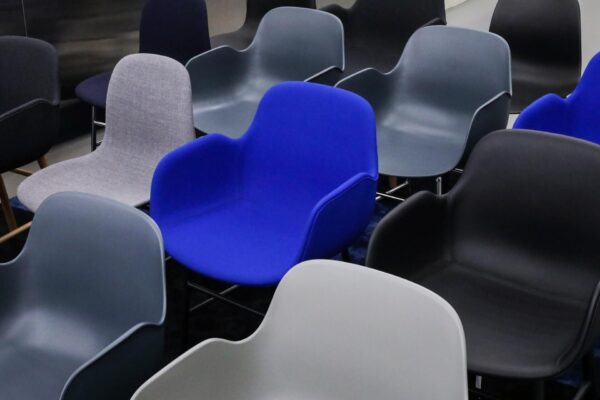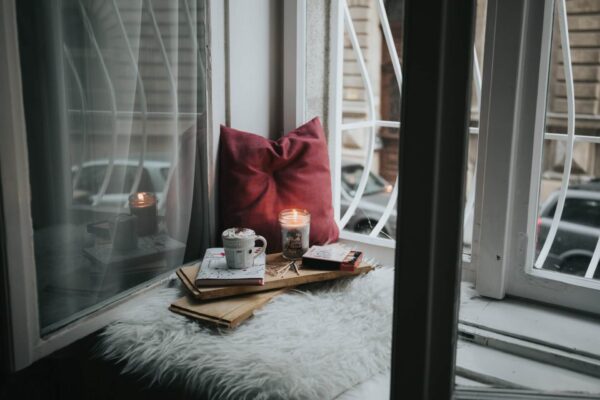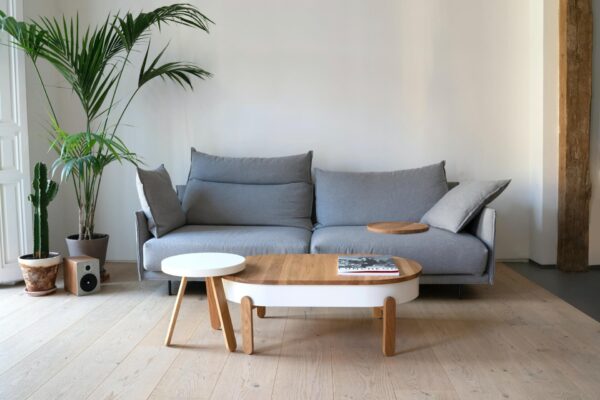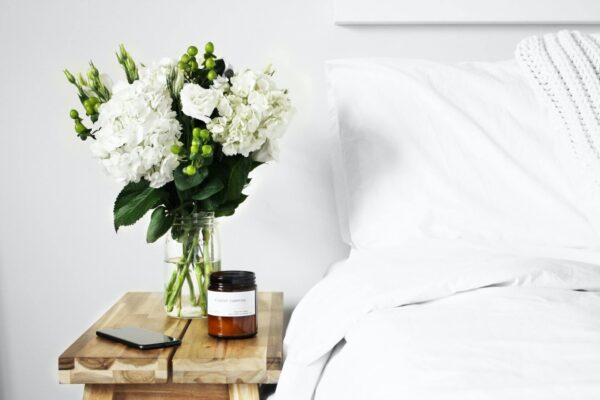The Japandi style has enjoyed great popularity recently – the furnishing trend combines Scandinavian and Japanese design and creates a modern and stylish living environment. Aesthetics, minimalism and simplicity are the focus here, while highlights and accents are set with interesting and unusual items. Find out everything you need to know about this interior design trend here.
What characterises the Japandi style and interior design?
The Japandi style is an aesthetic furnishing style that fuses the most important motifs of Scandinavian design with those of Japanese design. The style is built on their similarities – both Scandinavia and Japan emphasise simplicity, minimalism, naturalness and functionality – but also plays with the differences.
While the Scandi style is known for modern and minimalist cosiness in light and cool colours, the traditional Japanese interior design world is dominated by dark and warm colours – earth tones are particularly popular. Imperfection is also emphasised – the idea of “wabi-sabi” refers to the beauty in everything, even the things that are not perfect at first glance.

Japandi style: the most important features
The Japandi style relies on a subtle colour palette that thrives on contrasts – the combination of light and dark shades is a must! White and light wood tones meet stronger natural colours such as brown and beige. Accents are mainly set in black, but pastel shades or stronger colours such as blue or green also find their way into the trendy interior style.

Equally important are natural materials, which are highly valued in both designs. In addition to wood and earthenware, the Japandi style favours bamboo, paper, ceramics, cotton and linen. This creates a cosy yet aesthetic feel-good space.
Finally, minimalism is an important aspect of the Japandi style. Furniture, decorations and accessories should not only be chosen consciously, but should also be simple and unobtrusive. As we all know, less is more sometimes – so every element should have a function and not just be chosen at random.
Clear lines create a tidy overall look, while a few accents with rounded edges should be chosen.
How to create your new Japandi style interior – In a nutshell
- Choose furniture and decor consciously: Quality over quantity.
- Use beige and earthy colours as a basis.
- Combine light and dark colours.
- Clear lines create order, aesthetics and clarity.
- Simplicity and minimalism create a simple and light elegance.
- Play with the elements – natural materials take centre stage.
How to find the perfect Japandi furniture

If you want a Japandi interior, there’s no getting around wooden furniture. It is durable and stable and, depending on the grain, also looks particularly natural. You can choose both light and dark colours, the most important thing is that naturalness is guaranteed.
Furniture in the Japandi interior should generally be delicate and simple and have clear or rounded lines and edges. Nevertheless, you can choose a few more striking pieces of furniture that become the centrepiece of a room, such as a table or an armchair. Dark colours that stand out from the rest of the furnishings are also a good choice here.
In general, however, heavy, massive and big furniture should be avoided. Instead, low furniture is a key element, for example chests of drawers, sofas or stools. Typically, they have the thin, diverging legs that are also familiar from the Scandi style.
Japandi style decorations: delicate and discreet
Japandi style decorations are deliberately chosen to be real highlights. There are only a few decorative elements, but they are central and can certainly be more eye-catching – although simplicity and filigree should be the order of the day.
The Japandi style is based on the “wabi-sabi” philosophy, especially when it comes to decoration. Home accessories and decorations do not have to be perfect, because imperfections are natural, are part of life and have their own beauty.
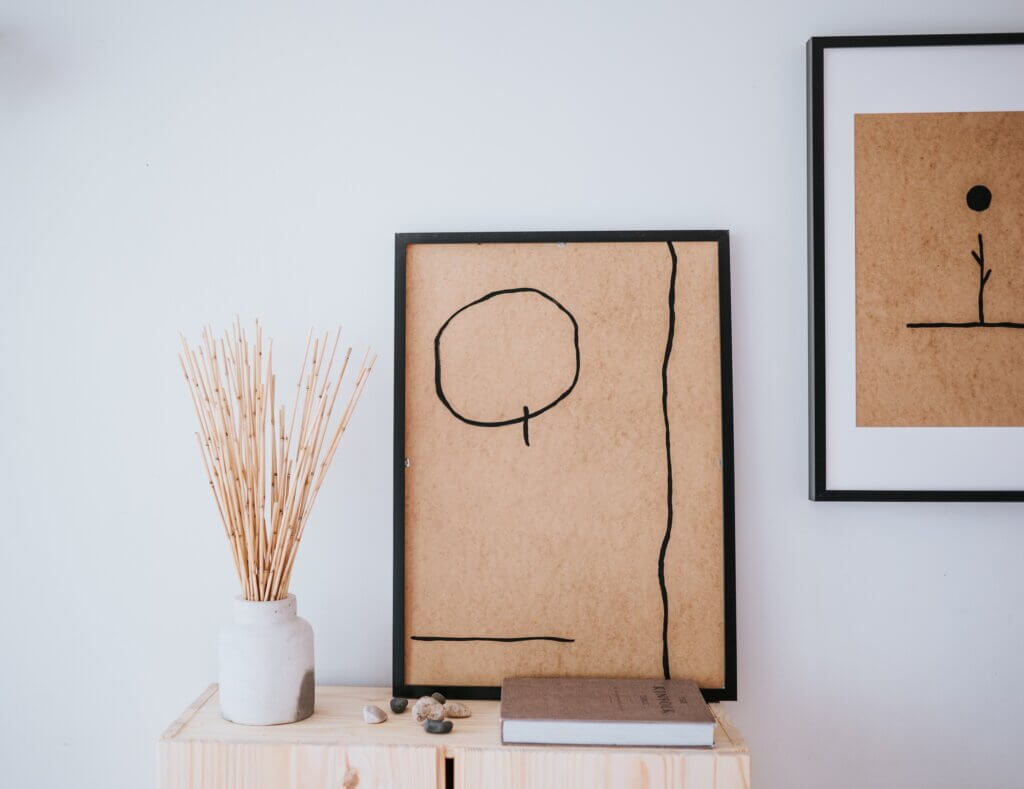
Round decorative elements are popular, for example in the area of lamps and vases. Natural materials are also essential – earthenware and ceramics are particularly popular, but glass, paper or rice paper (especially for lamps) are also frequently used and contribute to the Japandi feeling.
Japandi style crockery: Japandi in the kitchen
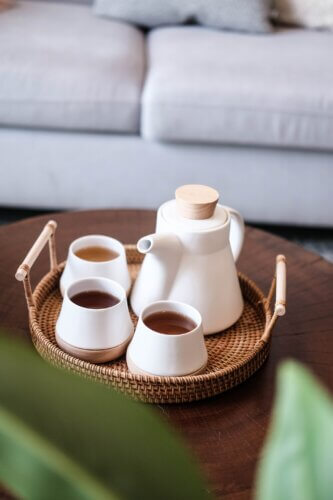
Japandi style crockery is particularly popular. This often has a high aesthetic appeal – with simple elegance and natural materials, plates, mugs and bowls are stylish everyday companions.
Cups and mugs are particularly popular – Japan has a great tea tradition, while Scandinavia is inextricably linked with its coffee culture.
Japandi crockery is usually made of earthenware or ceramic, giving it a particularly natural look. This adds a rustic touch to the kitchen, while the crockery is also durable and robust.
In addition to ceramic, wooden elements are also frequently used, which gives the crockery an even more natural and rustic touch. In addition, wood with its grain has a design that cannot be influenced, similar to the pattern in stone and ceramic.
